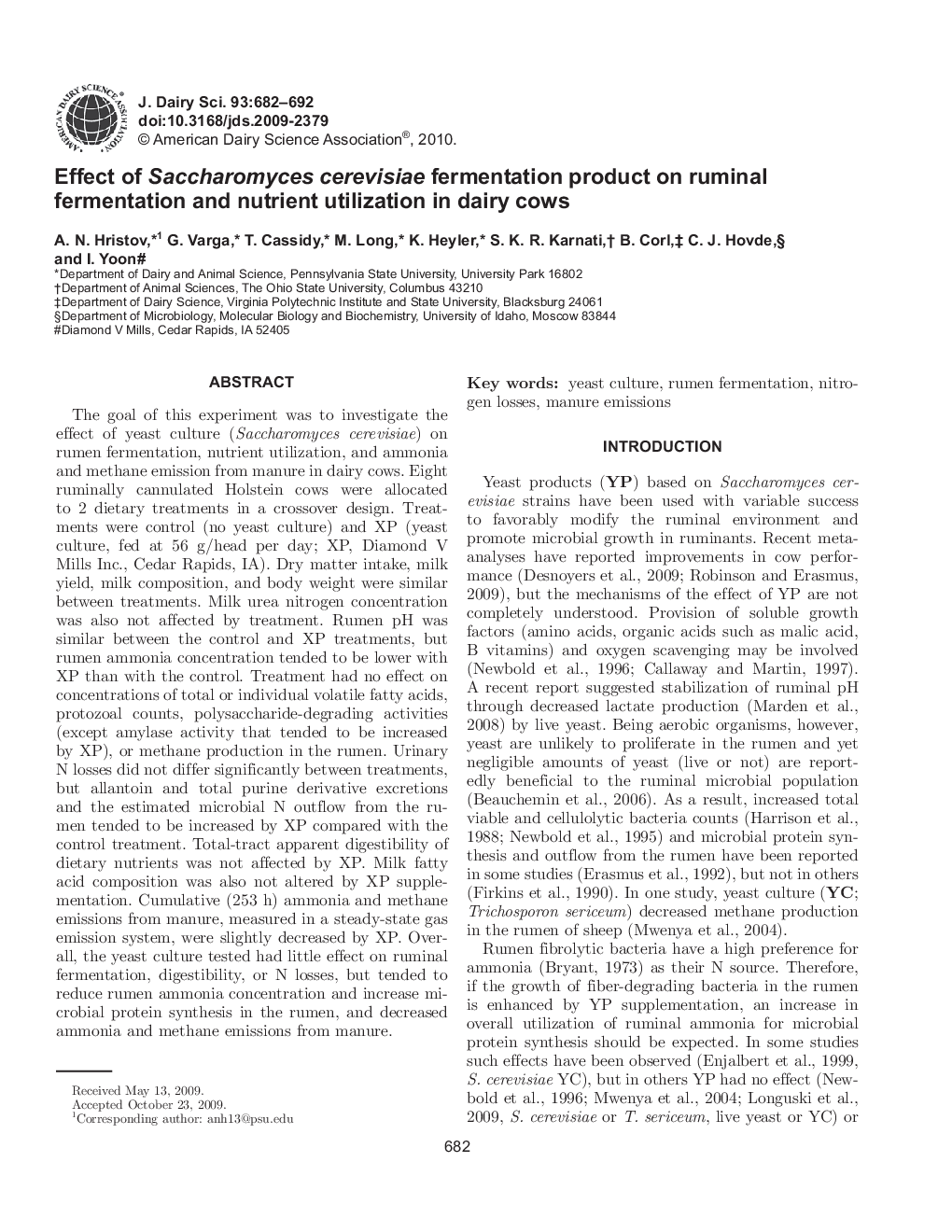| Article ID | Journal | Published Year | Pages | File Type |
|---|---|---|---|---|
| 5789783 | Journal of Dairy Science | 2010 | 11 Pages |
Abstract
The goal of this experiment was to investigate the effect of yeast culture (Saccharomyces cerevisiae) on rumen fermentation, nutrient utilization, and ammonia and methane emission from manure in dairy cows. Eight ruminally cannulated Holstein cows were allocated to 2 dietary treatments in a crossover design. Treatments were control (no yeast culture) and XP (yeast culture, fed at 56 g/head per day; XP, Diamond V Mills Inc., Cedar Rapids, IA). Dry matter intake, milk yield, milk composition, and body weight were similar between treatments. Milk urea nitrogen concentration was also not affected by treatment. Rumen pH was similar between the control and XP treatments, but rumen ammonia concentration tended to be lower with XP than with the control. Treatment had no effect on concentrations of total or individual volatile fatty acids, protozoal counts, polysaccharide-degrading activities (except amylase activity that tended to be increased by XP), or methane production in the rumen. Urinary N losses did not differ significantly between treatments, but allantoin and total purine derivative excretions and the estimated microbial N outflow from the rumen tended to be increased by XP compared with the control treatment. Total-tract apparent digestibility of dietary nutrients was not affected by XP. Milk fatty acid composition was also not altered by XP supplementation. Cumulative (253 h) ammonia and methane emissions from manure, measured in a steady-state gas emission system, were slightly decreased by XP. Overall, the yeast culture tested had little effect on ruminal fermentation, digestibility, or N losses, but tended to reduce rumen ammonia concentration and increase microbial protein synthesis in the rumen, and decreased ammonia and methane emissions from manure.
Related Topics
Life Sciences
Agricultural and Biological Sciences
Animal Science and Zoology
Authors
A.N. Hristov, G. Varga, T. Cassidy, M. Long, K. Heyler, S.K.R. Karnati, B. Corl, C.J. Hovde, I. Yoon,
